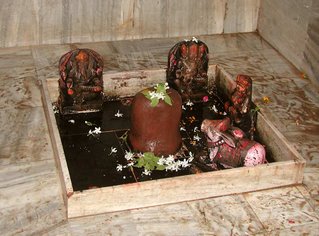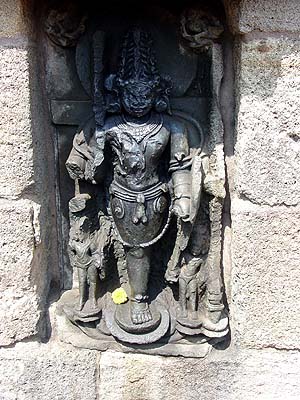
The Shiva Purana goes:
Somanadham Someswaram Samastha Gunaparagam |
Gora-Padhaka thavagnim Jyothir-Swaroopam Namamyaham ||
Along the sandy coastline of Northwest India, the Lord descended on earth in a column of fire. He made a divine appearance, one seen by few but sung by many. A flaming Linga of light came to reside along the silent sands of the western sea coast.
It is believed that the Chandra (Soman) was the chosen husband for the 27 beautiful daughters of King Daksha. Good natured and fair, Soman was not just kind to his many wives but presented himself with grace and charm unmatched. But this didn’t last long, Soman’s interested clearly drifted towards one of his wives and he began to favor Rohini over the others and gave her far more attention than the rest.
This angered his remaining wives and they went back heart broken to their father and complained to King Daksha over Soman’s new inclination. King Daksha’s anger knew no boundaries and he cursed Soman that he would lose all the beauty and charm that he was proud of till now.
Having realized his mistake Soman sort the help of the Devas who directed him to Brahma to help him get rid of his curse. Brahma advised him to descend to earth, and meditate on the Mrityunjaya mantra attributed to Lord Shiva at Somnath and seek his favor to get rid of the curse.
Soman (alias Chandra – Moon) descended to earth and along the confluence of the river Saraswati he stood on one leg and started to chant the Mrityunjaya mantra. He chanted for years until finally, Lord Shiva who was pleased with his penance appeared before him in the form of a light or Jyotir Swarupa. Lord Shiva couldn’t reverse the curse but he promised Soman that for one fortnight in a month he would grow to appear bright, charming, and glow to his fullest form for one night but the other fortnight of the month he would fade into darkness. Shiva promised him that he would be seated among his locks or jatas waxing and waning through the month. The waxing phase of the moon is called Krishna Paksham and the waning phase is called Sukla Paksham.
Within the shrine chamber is a sacred Jyothir linga, covered in red, with the Moon on its crown. Someswara Linga is potent for it has also been worshipped by Chandrabagha devi, making this place a Shakti peetham. The devi shrine resides behind the Shiva Linga itself. It was in later centuries that a temple was built to house the fiery Lord and his consort.

Also read: PRAN PRATISHTHA by Sardar Shri Vallabhbhai Patel


























